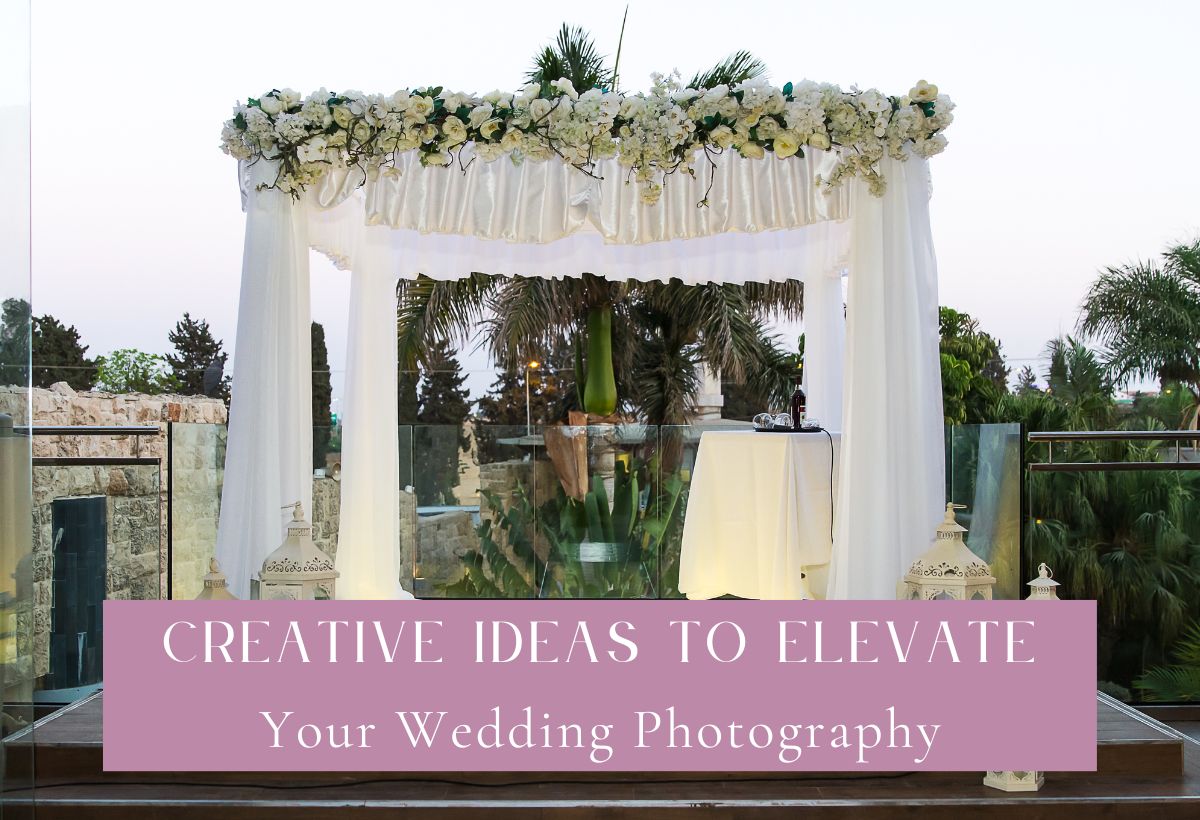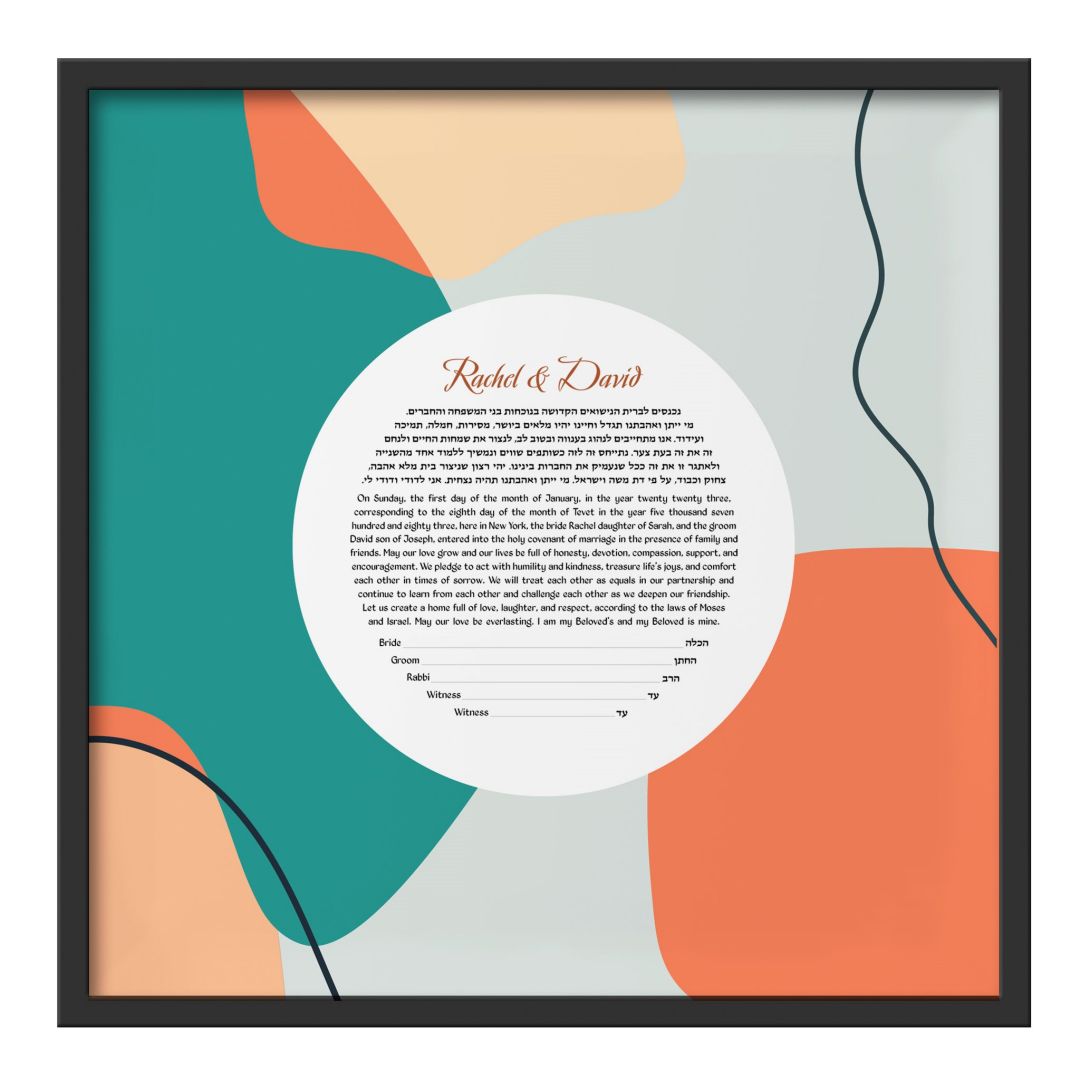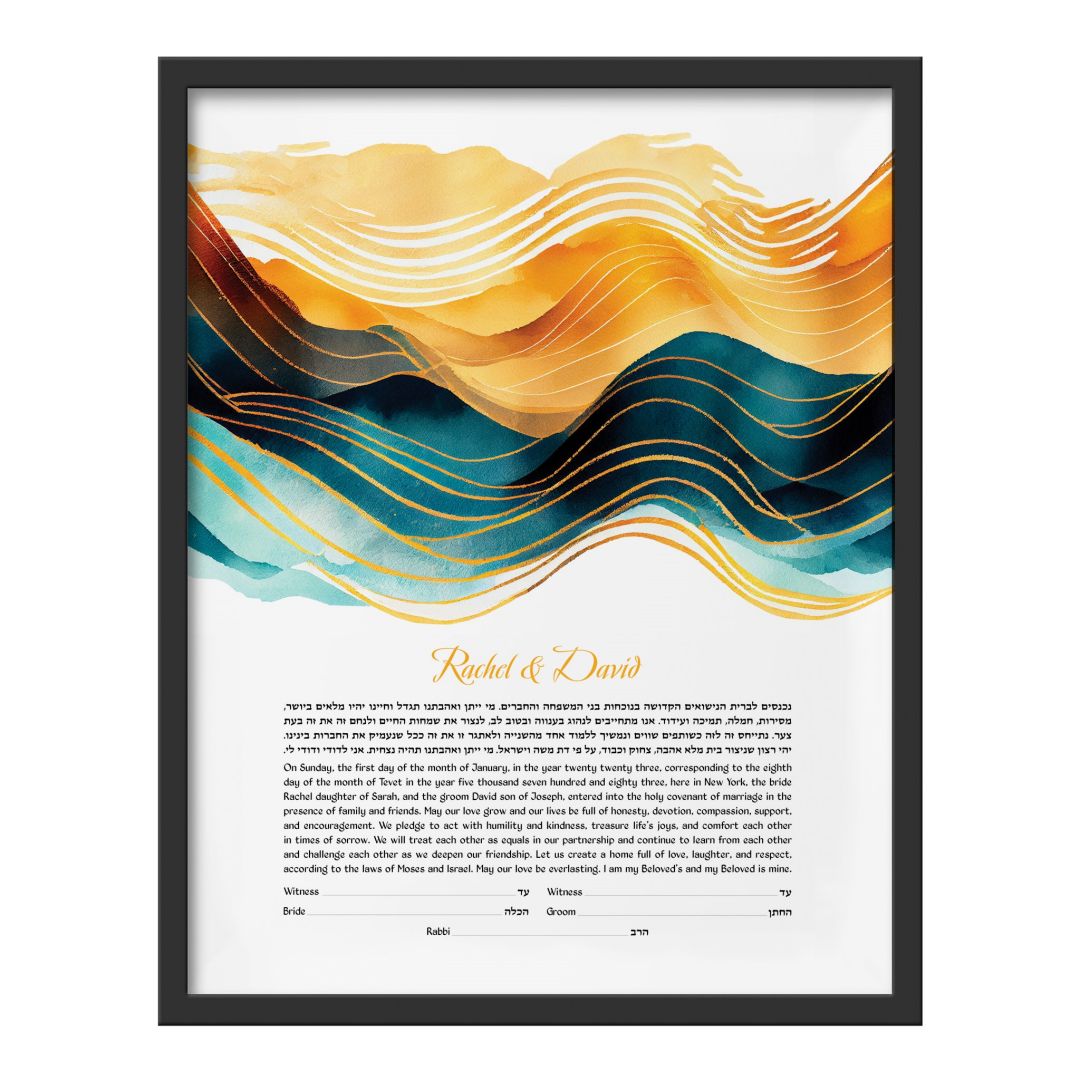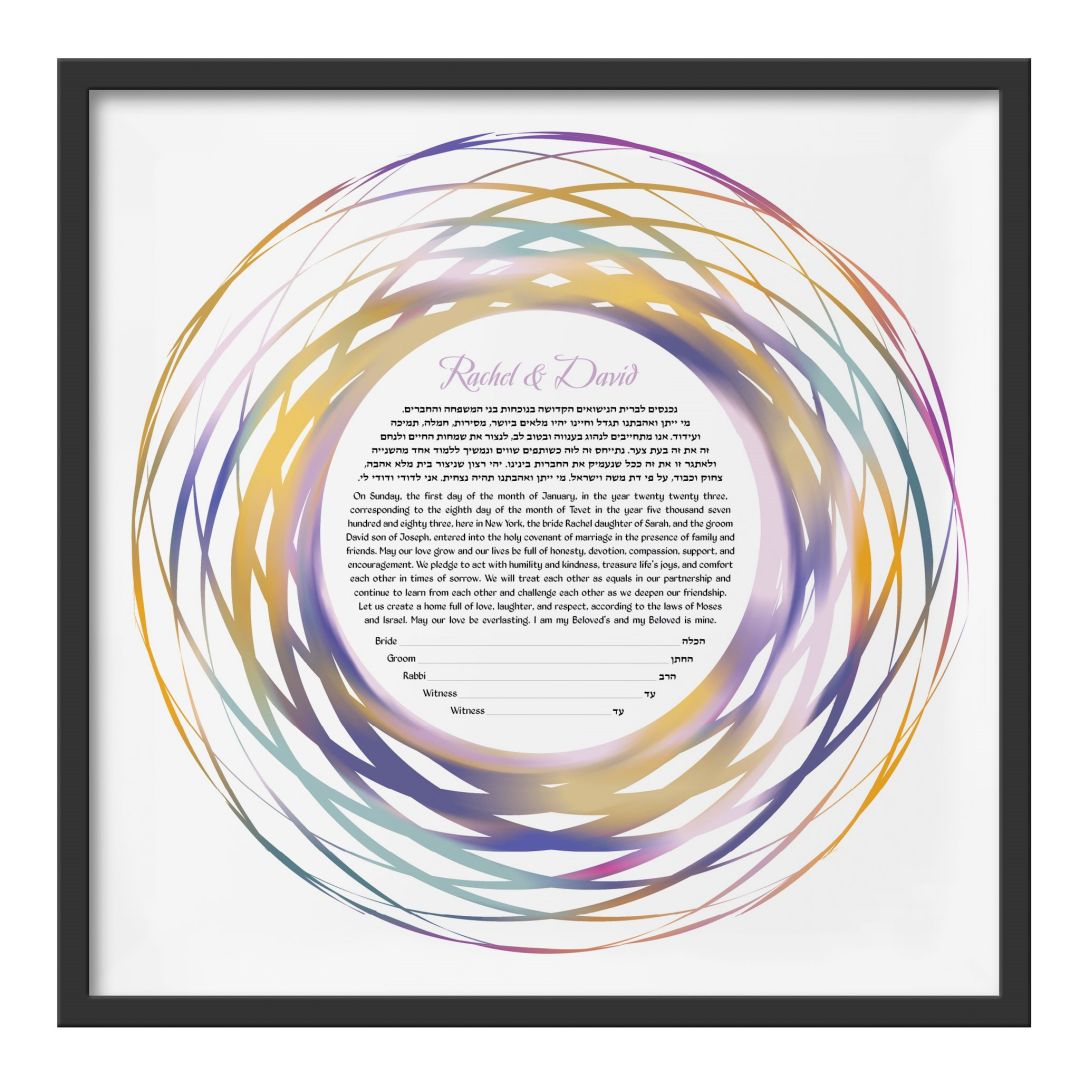
Traditional Wedding Ceremonies in Different Religions
The celebration of love through weddings is a universal experience, with each culture and religion contributing unique traditions to this joyous occasion. In this exploration of diverse wedding customs, we embark on a journey through various religions, shedding light on the distinctive practices that make each ceremony a captivating reflection of cultural richness. One tradition that stands out prominently is the use of the wedding ketubah in Jewish weddings, a symbol of commitment with a rich history.
Jewish Weddings and the Significance of Wedding Ketubah
Jewish weddings, steeped in tradition, are known for their heartfelt ceremonies, and at the heart of these celebrations lies the wedding ketubah. The term ‘ketubah,’ meaning ‘written’ in Hebrew, goes beyond being a mere legal document; it serves as a heartfelt testament to the couple’s commitment and love.
Exploring the Wedding Ketubah
The wedding ketubah is a masterpiece, intricately adorned with calligraphy and symbolic imagery. Its purpose extends beyond aesthetics, outlining the couple’s mutual obligations, financial responsibilities, and promises to each other. As the couple signs this document during the ceremony, it transforms into a tangible and binding expression of their commitment.
Modern Takes on Ketubahs
In the world of modern ketubahs, couples are reshaping the story of traditional marriage contracts, breathing new life into this timeless practice. This evolution gracefully blends age-old tradition with contemporary design, turning the ketubah into a canvas where couples can express their unique personalities. The modern ketubah landscape unveils a diverse collection, offering couples a rich array of choices in terms of design, style, and theme. Whether drawn to minimalist elegance or vibrant bursts of color, these ketubahs cater to individual tastes, allowing couples to curate a visual tale of their distinct love story. Beyond being a legal document, the modern ketubah becomes a cherished piece of art, infused with sentimental value, capturing the essence of the couple’s journey.
For those captivated by the allure of modern ketubahs, an enchanting collection beckons exploration, revealing the limitless possibilities of merging tradition with contemporary design. This collection serves as an inspiring starting point for couples, encouraging them to embark on a collaborative journey with artists and craftsmen. Together, they can craft a bespoke masterpiece, ensuring their ketubah becomes a tangible expression of the spirit that defines their union. Embracing these modern takes on ketubahs not only pays homage to the sanctity of tradition but also joyously acknowledges the ever-evolving nature of love—an art form that, like the ketubah itself, gracefully adapts with each passing generation.
The Evolution of Ketubah Design
The significance of the ketubah has deep historical roots, originating thousands of years ago as a means to protect women. This marriage contract ensured that both partners understood their rights and obligations. Today, the ketubah remains relevant, encapsulating a couple’s commitment and vows.
Decorating ketubahs has been an ancient tradition, initially driven by the need to preserve the document. Couples would enlist artists to ensure that their ketubahs were not only safe but also beautiful and pleasant to look at every day. Traditional ketubah designs often featured Jewish symbols like the star of David, hamsas, Torah stories, or imagery of Jerusalem. Modern styles reinterpret these symbols or incorporate elements of contemporary art.
Modern Ketubah Design Trends
Contemporary art trends strongly influence modern ketubah designs, aligning with artistic styles prevalent today. Modern ketubahs may include calming pastels, textured and 3D art, bold colors, street art, abstract motifs, or nature-inspired designs. Couples have the freedom to add personal details or illustrations, making their modern ketubah a unique and meaningful expression of their love.
Here are a few common contemporary art trends influencing Ketubah design:
- Calming pastels and neutrals: Provide peace and serenity to viewers.
- Textured and 3D art: Symbolize the depth and meaning of a Ketubah.
- Bold colors and street art: Convey social or personal messages, providing unique perspectives.
- Abstract and nature motifs: Allow for freedom of expression and interpretation.
Couples might choose to customize their modern ketubahs further by adding personal details or illustrations, such as incorporating their names or a picture of themselves into the artwork.
Choosing a Modern Ketubah
Selecting a modern wedding ketubah involves considering artistic tastes, budget, and the chosen artistic medium. Modern technology allows for diverse options, ranging from laser-cut papercut ketubahs to digital prints of unique artwork. Couples can browse online marketplaces, narrowing down designs that resonate with them. Initiating the search early ensures ample time for decision-making, customization, and shipping.
Incorporating Your Modern Ketubah Into Your Wedding
The ketubah plays an important role in the wedding ceremony, with a dedicated signing ceremony usually held before the main event. Modern couples may choose to include close family and friends in this intimate gathering, providing a first look at the ketubah’s design. Once signed, the ketubah takes center stage during the wedding, and some couples opt to frame and display it as part of their wedding décor. This not only adheres to Jewish customs but also adds a unique touch to the celebration.
The Importance of Ketubahs in Modern Times
The tradition of the ketubah, with its deep and rich history, has evolved in today’s Jewish culture. Many modern couples find meaning in this ceremonial custom, creating a bridge between the past and the present. The custom of a ketubah originated as a means to protect women, ensuring that both partners understood their rights and obligations. While societal norms may have changed over the centuries, the idea remains relevant today.
Today, ketubahs can be modernized by including contemporary text that speaks to the couple or through their style and design. Modern couples have the freedom to choose modern artists or motifs to decorate their ketubahs according to today’s fashion and tastes.
Wedding Traditions Across Religions:
Beyond Jewish weddings, various religions contribute their unique wedding traditions, creating a vibrant tapestry of cultural celebrations. In Christian weddings, vows and ring exchanges symbolize commitment and love. Hindu weddings are a vibrant spectacle, featuring sacred vows taken around a sacred fire. Muslim weddings involve the Nikah, a solemn marriage contract, and the Walima, a joyous celebratory feast. Each tradition reflects the cultural and religious landscape from which it originates, enriching the global narrative of love and commitment.
This exploration of diverse wedding traditions demonstrates the rich cultural heritage that shapes the tapestry of global celebrations. From the intricate artistry of the Jewish wedding ketubah to the diverse practices embedded in various religious ceremonies, each tradition adds a layer of significance to the universal celebration of love. Embracing these traditions allows couples to connect with their roots while creating a unique and meaningful experience that resonates with their beliefs and values. As we witness these ceremonies, we honor not only the diversity of human culture but also the timeless and universal desire for love, commitment, and unity.
Conclusion
In conclusion, the beauty of wedding ceremonies lies in their diversity, a reflection of the rich tapestry of human culture. From the intricate artistry of the Jewish wedding ketubah to the contemporary designs embraced by modern couples, each tradition adds a layer of meaning to the celebration of love. Embracing the evolution of customs allows couples to create a unique tapestry of their own, intertwining the historical significance of rituals with the personal touches that make each wedding a distinctive journey.
This exploration is a testament to the enduring nature of love, encapsulated in traditions that span centuries and resonate in the hearts of couples as they embark on their shared life journey. As we celebrate these ceremonies, we honor not only the rich cultural heritage but also the universal desire for love, commitment, and unity.



